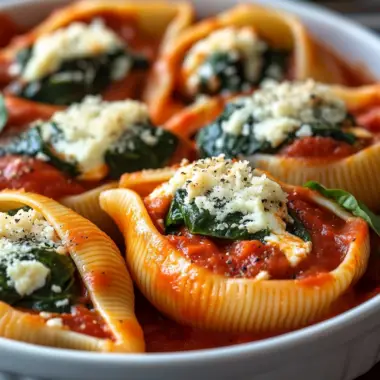The Olivier Salad is a beloved staple of Russian cuisine, often gracing tables during festive holidays, family gatherings, and celebratory meals. With roots dating back to the 19th century, this dish has evolved from a lavish restaurant recipe to a cherished household favorite. It’s hearty, flavorful, and comforting everything you want in a cold salad. The delightful combination of tender potatoes, carrots, green peas, pickles, eggs, and protein (like chicken or ham) bound together with rich mayonnaise delivers a satisfying bite with every forkful. Perfectly adaptable and irresistibly nostalgic, the Olivier Salad isn’t just a dish it’s a cultural treasure. It’s ideal for anyone looking to try something new yet familiar, offering a unique twist on classic potato salad. Whether served as a side, main, or appetizer, it’s always welcome at the table. The best part? You can prep it ahead of time, and it tastes even better the next day.
Full Recipe:
Ingredients:
-
2 large Yukon gold potatoes, peeled and diced
-
3 medium carrots, peeled and diced
-
1 cup frozen peas
-
4 hard-boiled eggs, peeled and chopped
-
1 cup cooked chicken breast, diced (or ham)
-
5 small pickles, diced
-
1/2 cup mayonnaise
-
Salt and pepper to taste
-
Fresh dill for garnish (optional)
Directions:
-
In a large pot, boil potatoes and carrots until fork-tender but not mushy. Drain and let cool.
-
In a small saucepan, cook peas until just tender, about 2–3 minutes. Drain and cool.
-
In a large mixing bowl, combine diced potatoes, carrots, peas, chopped eggs, chicken, and pickles.
-
Add mayonnaise and season with salt and pepper. Mix gently until fully combined.
-
Chill in the fridge for at least 1 hour before serving. Garnish with dill if desired.
Prep Time: 15 minutes | Cooking Time: 25 minutes | Total Time: 40 minutes
Kcal: 310 kcal | Servings: 6 servings
The Heartwarming Tradition of Olivier Salad
Olivier Salad, often referred to as Russian Salad, is more than just a dish it’s a culinary symbol of celebration, nostalgia, and family gatherings. Found on countless holiday tables, from New Year’s Eve feasts to birthday banquets, this humble yet hearty salad has become a beloved staple in Eastern European and Slavic households. Its creamy, savory profile formed from a blend of cooked vegetables, diced pickles, eggs, and protein all folded into rich mayonnaise has captivated generations.
Originating in the 1860s from the famed Hermitage restaurant in Moscow, the Olivier Salad has undergone a transformation from gourmet haute cuisine to homey comfort food. Yet, despite the evolution in ingredients and presentation, the spirit of the dish remains unchanged: it brings people together.
History and Origins
The Olivier Salad is named after Lucien Olivier, a French chef of Belgian descent who ran the elegant Hermitage Restaurant in Moscow during the mid-19th century. His original recipe was closely guarded, known only to him and the restaurant staff. What is known is that the original included exotic and luxurious ingredients such as grouse, caviar, crayfish tails, and a Provençal dressing. When Olivier passed away, his apprentice attempted to recreate the dish with more accessible ingredients, which eventually became what we recognize today as Olivier Salad.
Throughout the Soviet era, the recipe was further simplified, reflecting the economic and political circumstances of the time. Gourmet components were replaced with boiled vegetables, bologna or chicken, canned peas, and mayonnaise. Despite this simplification, or perhaps because of it, the salad became more accessible and was wholeheartedly embraced across the former Soviet Union and neighboring countries.
Cultural Relevance and Modern Popularity
What makes Olivier Salad so significant is not just its flavor but its emotional resonance. For many, it’s inseparable from the memory of celebrations, family gatherings, and the festive buzz of the holidays. It is a must-have dish during New Year’s Eve in Russia and much of Eastern Europe. The simple act of preparing Olivier Salad is often communal family members gathering to chop, mix, and reminisce, making the cooking process just as valuable as the eating.
Today, this salad’s popularity spans borders. Variants exist in countries like Poland (where it’s called Sałatka Jarzynowa), Bulgaria, Serbia, Iran, and even as far as Latin America. Each region adjusts it slightly to local tastes, but the core remains a creamy, chunky, savory salad that balances richness with refreshing tang from pickles and a crunch from vegetables.
Key Ingredients and Their Significance
Though many versions of Olivier Salad exist, a few key ingredients are almost always present: boiled potatoes, carrots, peas, eggs, pickles, and some form of protein usually diced chicken, ham, or bologna. Everything is finely chopped into uniform pieces and coated generously with mayonnaise. Each component plays a unique role in flavor and texture:
-
Potatoes offer bulk and creaminess.
-
Carrots contribute sweetness and color.
-
Peas provide a pop of freshness.
-
Eggs add richness and protein.
-
Pickles give the salad its characteristic tang and crunch.
-
Meat (usually cooked chicken or ham) lends substance and savory depth.
-
Mayonnaise binds everything together into a smooth, flavorful whole.
The beauty of Olivier Salad lies in its adaptability. It can easily be made vegetarian by omitting the meat, or modernized with additions like celery, apples, or fresh herbs. Some prefer a lighter dressing with Greek yogurt or a blend of mayo and sour cream. No matter the changes, the soul of the salad remains.
A Dish That Encourages Creativity
While the classic recipe is cherished, Olivier Salad invites experimentation. Some cooks replace the traditional chicken or ham with smoked meats or even seafood, echoing its luxurious origins. Others modernize it with avocado or swap mayo for lighter yogurt-based dressings. In health-conscious households, you might find versions with reduced mayonnaise, or even vegan renditions using plant-based egg and meat alternatives.
You can serve Olivier Salad as a side dish, a light main course, or even as an appetizer in individual cups or on toast points for an elevated presentation. The salad keeps well in the refrigerator and often tastes better the next day as the flavors continue to meld making it a great choice for meal prep or advance planning during busy holidays.
Why Olivier Salad Is a Perfect Holiday Dish
There are several reasons why Olivier Salad continues to be a favorite during festive seasons:
1. Easy to Make in Large Batches
Whether you’re feeding a small family or a room full of guests, the ingredients scale easily and are generally affordable and accessible.
2. Great for Make-Ahead Meals
Olivier Salad is best when chilled, allowing the flavors to develop. This makes it ideal for preparing a day before a celebration, saving time and reducing stress on event day.
3. Nostalgic and Universally Loved
For many, Olivier Salad is a comforting taste of childhood. For others, it’s an introduction to a rich culinary tradition. Its familiar flavors and creamy texture make it approachable even for those new to Eastern European cuisine.
4. A Balanced Flavor Profile
It’s creamy but not overly heavy, tangy but not sour, and savory with just a touch of sweetness from the vegetables. It hits all the right notes for a comforting dish.
International Variations of Olivier Salad
While the Russian version is the most widely known, similar salads exist across cultures:
-
Polish Sałatka Jarzynowa: Includes apples and often omits meat.
-
Spanish Ensaladilla Rusa: Features tuna and olives.
-
Iranian Salad Olivieh: Includes chicken, potatoes, eggs, and mayonnaise but is puréed into a spreadable consistency.
-
Latin American Variants: May feature beets, lending a bright pink color to the dish.
These international variants highlight the dish’s versatility and global appeal, proving how food traditions can evolve and transcend borders.
Serving Ideas and Pairings
Olivier Salad can be served chilled as a standalone dish or as part of a larger spread. Here are a few suggestions:
-
On a Holiday Platter: Pair with roasted meats, deviled eggs, rye bread, and pickled vegetables.
-
As a Light Meal: Serve on a bed of fresh greens or in lettuce cups.
-
In Individual Portions: Use small ramekins or cocktail glasses for an elegant presentation at parties.
-
In Sandwiches or Wraps: Use leftovers in a sandwich or wrap with leafy greens for a quick lunch.
Beverage-wise, this creamy dish pairs well with sparkling water, dry white wine, or even a light lager.
Conclusion:
Olivier Salad is much more than just another potato salad. It’s a dish steeped in history, enriched by cultural tradition, and perfected in home kitchens around the world. Whether you’re making it for a festive table, a family lunch, or out of curiosity for new flavors, it delivers on taste, comfort, and satisfaction.
Its ability to be customized ensures it fits seamlessly into any dietary preference or celebration style. The ritual of chopping, mixing, and sharing this salad is just as rewarding as eating it. In every spoonful lies a piece of culinary heritage one that has brought joy to countless tables for generations.








